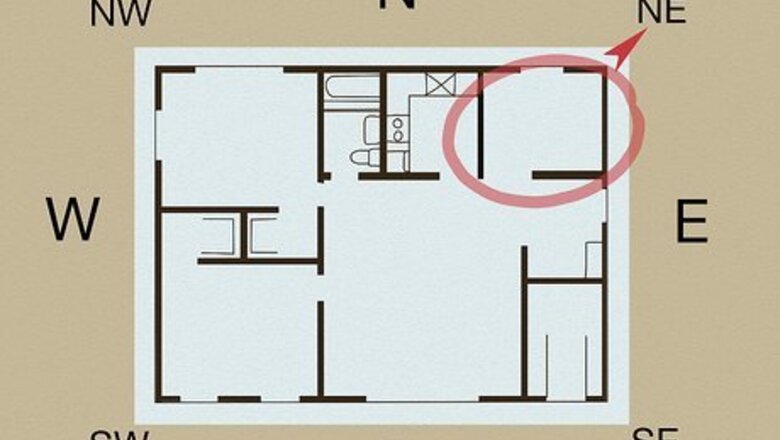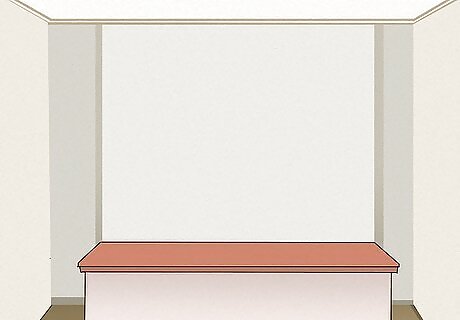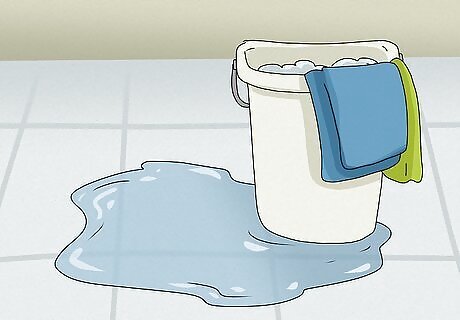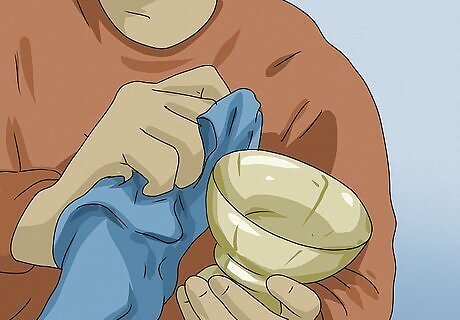
views
- Place your pooja room or mandir in the northeast corner of your home on the ground floor, with your idols facing toward the west, east, or south.
- Arrange your idols so they’re several inches away from the wall and at least 6 in (15 cm) off the ground to allow air and incense to circulate around them.
- Decorate your pooja room with light, neutral colors and decor that matches the rest of your home. Tidy up the pooja room regularly.
Best Temple (Mandir) Location & Facing Direction

Pick a room in the northeast of your home for the pooja (worship) room. According to Vastu, a traditional Indian style of architecture, the northeast corner of the home is the most auspicious and conducive to good energy flow (regardless of whether you have a north-, east-, south-, or west-facing house). If the northeast is not available, a room on the north or east sides of the house are the next best options. Sometimes, a room to the west is acceptable. A room in the south of the home is considered inauspicious. Preferably, choose a room where the doors and/or windows open to the north or east. If you’re designing a new room, a pyramid or gopura-shaped ceiling provides the best energy. In a multi-level home, place the pooja room on the ground floor and ensure it is not directly underneath a staircase. Choose only one room or area to be your pooja room or mandir. This makes the space more special and reverent for worship.

Arrange your mandir and idols to face west, east, or south. The direction your idols face is important since it determines the direction in which you worship, and placing them in the wrong direction can invite negative energy into your home. Place your mandir, idols, or sacred images so that they face the west, east, or south. This ensures that you pray to the east, west, or north (and never to the south, which is considered inauspicious in many cases).
Arranging the Idols

Position idols away from the wall and at least 6 in (15 cm) off the ground. When placing your idols or images in or on top of your mandir (preferably made of wood or marble), make sure there is space around them to allow for air circulation. This makes them comfortable and allows ceremonial incense smoke to waft all around them during worship. Consider placing your mandir cabinet on a pedestal or platform to elevate it off of the ground.

Make sure none of the idols or images are facing each other. Ideally, they will all face the same direction when possible. This helps prevent the flow of negative energy around and inside the pooja room. Also, make sure not to use idols or images that are chipped, broken, or otherwise damaged, since this is said to be inauspicious. Ideally, the idols will be no more than 9–10 in (23–25 cm) tall.
Items to Include & Decoration Ideas

Storage cabinet If needed, place a storage cabinet for auspicious items like religious texts, lamps, and other prayer objects so it faces west or southeast. Never place a storage cabinet or shelf above the mandir, since this will block positive energy in the pooja room. Store only what’s necessary for meditation and worship in the pooja room. Too much clutter is said to invite negative energy into the space.

Lamps and agni kund According to Vastu principles, keep any ceremonial lamps and your agni kund (a small, ceremonial fire pit) in the southeast portion of the room. If possible, use copper or brass lamps, as these metals are believed to purify the environment. During meditation or worship, keep the lighting fairly dim (like in a temple). At other times, the space can be brightly lit (preferably with natural light from windows in the pooja room).

Scented oils and incense Fragrant oils and incense help clear the room of negative energy and provide a reverent ambiance for worship. Try burning incense like sandalwood or jasmine to stimulate your senses.

Furniture and seating Blend your pooja room with the rest of your home by choosing furniture that matches your interior decor. Wooden or upholstered chairs and cushions are perfectly acceptable for a pooja room and are harmonious with many different decor styles.

Decor and aesthetic accents Feel free to include curtains, drapes, plants and flowers, wall art, and accent pieces that tie the pooja room to the rest of your home. These can include wooden elements and decorations (which are considered auspicious), sacred symbols like the Om, copper or brass accents, or anything else that elevates the ambiance of the space and makes it feel like home. If you’re including decorative images or artwork, avoid pictures of the dead or images of violence, since these invite negative energy into the pooja room. Similarly, try not to store dried flowers, money, faded images, or bells in this space.

Flooring Choose flooring for your pooja room that harmonizes with the rest of your home. This could include hardwood, marble, or tiles (with or without designs). If you select tiles, choose a light, neutral color. Tiles made from natural stone like marble or granite are best.

Color scheme Go for light, muted, neutral tones on the walls to make your pooja room seem brighter and more spacious. According to Vastu, this will also increase the flow of concentration. Try shades of white, light blues, pale yellows, and/or ochre to stimulate meditative energy, and incorporate these colors into your decor and accent pieces, too.
Arranging a Mandir in an Apartment

Place a mandir in the northeast, north, or east corner of your living room. If you don’t have space for a separate pooja room, use the northeast corner of your living room or another quiet, uncluttered space in your apartment (the kitchen makes a good backup). Hang some sacred symbols, like the Om, on the walls, along with framed images of the gods or idols you wish to worship. It’s best to avoid putting a mandir in the bedroom, but if you must, place it in the northeast corner. Adjust the angle of your bed (whether the mandir is in your bedroom or not) so that your feet do not point toward the mandir while you sleep. If possible, make sure the mandir or makeshift pooja room does not share a wall with the toilet or bathroom.
Cleaning Your Pooja Room

Dust, declutter, and wipe down surfaces in the pooja room every few days. Regular maintenance keeps your pooja room fresh, vibrant, and auspicious. First, remove and throw away any old or dried up flowers, used matches or incense sticks, or other clutter that may have accumulated over the past few days. Then, use a dust cloth to dust counters and shelves, intricate woodwork in your design elements or doors, and other items. Since incense smoke and oils can leave a film on surfaces, use a glass cleaner spray or another cleaner to wipe down framed images and other cleaner-safe surfaces.

Wash the floors and walls with warm water and mild soap. Wipe down or mop tile or stone floors with warm, soapy water to clean them of oily residue that can accumulate from lamps, incense, and scented oils. Be cautious not to use acidic cleaners on marble, since it is porous and can erode. If your walls are painted, wipe them down with a paint-safe cleaner now and then, and plan to repaint the walls about once a year to keep them bright and fresh.

Keep your brass, silver, and/or copper utensils and items shiny and clean. Bright, reflective metal enhances the reverence for the space and can help purify the atmosphere of the room. Try these cleaning tips to keep your metal pieces and decor looking like new: To clean brass: Soak the item in hot, soapy water for 10 minutes and use a metal scrubber to lightly wipe off oily residue. Rinse the item, then scrub it again with a lime-sized ball of tamarind soaked in water. Rinse again. To clean silver: Make a paste of water and vibhuti (sacred ash) and scrub the silver with your hands (do not use a scrubber, since silver is soft and may scratch). Then, wipe the piece clean with a thin, soft muslin cloth. Or, rub the silver with ketchup or toothpaste and a soft brush, then rinse thoroughly. To clean copper: Dip a cloth in a mix of equal parts salt and vinegar, then rub the copper item in gentle circles (use a soft toothbrush to reach into small crevices). Rinse in warm water and dry with a clean cloth.


















Comments
0 comment